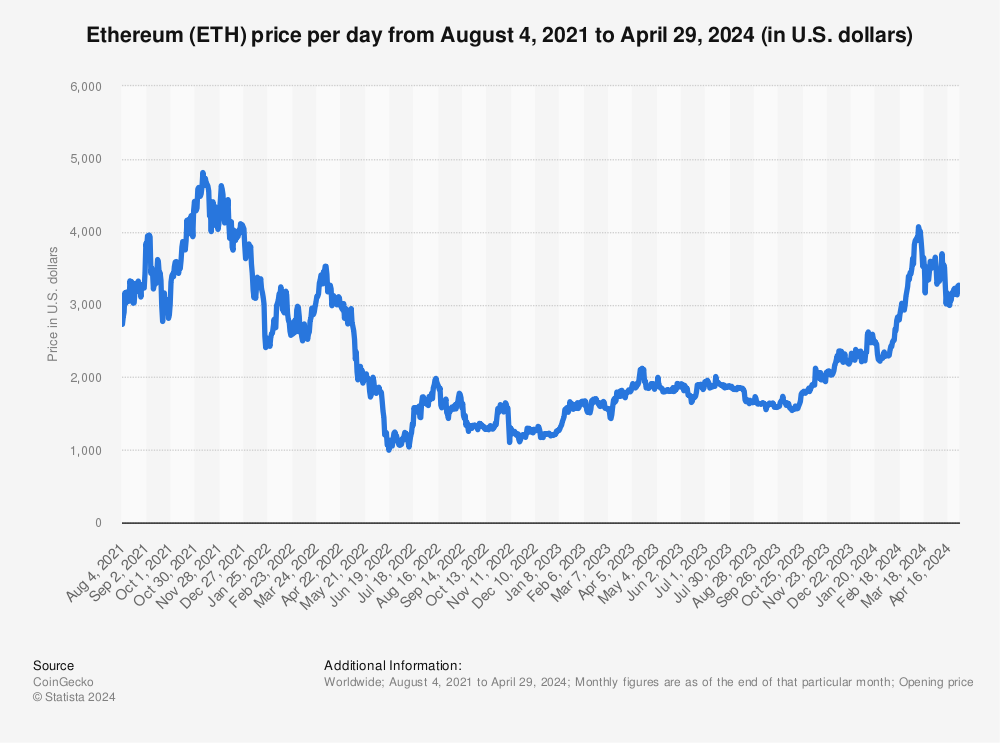What are Ethereum Gas and Gas fees? How is it different from Bitcoin?
Why does the Gas fee fluctuate? We simplified the meaning of the above terms for a better understanding of our readers.
Should I buy Ethereum or Ethereum Classic?
The gasoline model
To better understand the Ethereum model of Gas and fee, we need to comprehend the age-old gasoline model and its works.
Now let us think that I want to travel a distance of 300 kilometers in my Car. As my Car’s fuel efficiency is 15 Km/liter, I have to buy 20 liters of Gasoline to fuel my Car.
The cost of one liter of Gasoline is $1. So, I have to pay $20 to complete my task of traveling 300 km.
I think you understood the above situation. Now let us discuss how the Gas fee works.
Should I buy Ethereum or Ethereum Classic?
Gas and Gas fees in Ethereum
In the above example, the task is “To travel 300 km”. Now let us correlate it in the Ethereum environment. One of the many tasks in the Ethereum environment is to transfer Ether from one customer to another customer. Hence the task in the Ethereum environment is “Transfer of Ether.”
For the “Task to travel 300Km”, I require 20Liters of Gasoline. Similarly, for the “Task of sending Ether from one customer to another,” there is a fixed price. The price is 21000 Gas units.
There are a lot of petroleum products. All the products are derived from crude oil. Some Examples are Gasoline, Diesel, LPG, and the list goes on. Similarly, there are various types of transactions in the Ethereum environment.
For example, sending Ether from one person to another is a type of transaction. Paying Ether for converting a physical product into NFT is another type of transaction.
Take your financial future in your own hands! Sign up for MoneyMunkx today and gain access to exclusive tips, tricks, and insights into the world of finance, stocks, and cryptocurrency!
Transfer of tokens from one person to another person is another type of transaction.
Hence different transactions require different amounts of gas units.
For simple transfer of Ether coins from one person to another person, the transaction charges are 21000 gas units. The approximate gas units required may range from 50000 gas units to 100000 gas units for minting a token.
Hence different kinds of transactions are charged at different gas units in the Ethereum network.
Is Ethereum much bigger than Bitcoin?
The price of Gasoline changes daily. When there is scarcity, the price peaks while it moves lower when there is a surplus. Similarly, the cost of each
Gas unit varies with time. During busy times, the price peaks, and it reaches the bottom when the traffic in the Ethereum network decreases.
The present cost of Gasoline in the united states is 80 Cents. Similarly, the price of 1 gas unit is 5 Gwei. Similar to cents, the cost of Gas is calculated in Gwei in Ethereum.
One dollar equals 100 cents. Similarly, one Ether is 100000000 Gwei. The cost of each gas unit is called a Gas fee.
Why Ether is not used to charge the transactions
Now, everyone will have a doubt about why people are not using Ether as transaction fees and instead complicate the system by introducing another unit called Gwei.
As we know, Cryptocurrency is a volatile market. The value of Ether swings widely. As a result, the miner may not get consistent income while registering the transactions.
For example, let’s think that the current price of Ether is $3700. Let’s say that due to high volatility, the price shot down to $1000. As a result, no miners will be interested in mining as the prices are slashed. Few miners might wait for the price to go up to participate in mining.
As a result, incomplete transactions pile up in the network, collapsing the entire Ethereum. Hence to maintain a constant payment service to the miners, the gas fee is introduced.
Should I buy Bitcoin, Bitcoin Cash, or Bitcoin SV?
The amount of gas fee we pay will be maintained constant. But how do they achieve this?
The amount of gas units required for each type of transaction is always constant. Hence only the gas fee varies. The gas fee is highly dependent on the price of Ether.
When Ether increases, the Gas fee decreases. Similarly, when the price of Ether decreases, the Gas fee increases. As a result, the amount of gas fee will be maintained nearly constant.
Hence irrespective of Ether’s price, the miner will get a constant amount for every transaction. This method is implemented to protect the payment rights of the Miners.
The riveting birth of Cryptocurrency
As the computing power required for each transaction is not related to Ether’s price, the miner should get a constant amount for his computing power every time. This is the power of “Code is Law,” which is driving Ethereum.
Ethereum Gas fee chart from 2015.

Find more statistics at Statista
The present Ethereum Gas price chart can be viewed here.
Since November 2020, the rate of transactions in the Ethereum network has increased. This has led to an increase in Gas fees. The unit of the Gas fee is Gwei (Similar to Cents).
You can make your transactions faster during high demand by paying a high Gas fee (Extra gas price) than usual. If you spend less on Gas fees, you have to wait a long time to complete transactions.
In simple words, the more you pay, the faster your transactions will be registered. It is a Miner’s friendly approach.
Gas limit
Isn’t there a limit to this? Yes, there is a limit. Before any transaction, you can enter the maximum gas units you want to utilize for this transaction. It is called “The Gas Limit.”
A gas limit is a customer-friendly approach. This approach protects the customers from DAPPS which usually consume more Gas. But remember, the minimum number of gas units should be paid for each transaction. If you spend too low of Gas units for a transaction, it may fail, but the Gas units will still be charged.
Recommended Read:
Is Ethereum much bigger than Bitcoin?
The priority standard
From the miner’s point of view, they get paid the gas fee for every transaction they register in the block. But the block has a data limit. Every block is designed so that it can store data that costs up to 12.5M Gas units.
Hence Miners show interest in transactions with high Gas fees. They prioritize the high Gas fee transactions as they are incentivized for registering these transactions. In simple words, the Miners are getting extra Gas for writing the transaction. Hence they show more interest in recording them.
Hence the first blocks to be filled will always contain high Gas fee transactions. As a result, the transactions with a low Gas fee remain unprocessed for more extended periods.
Ethereum Gas cost table
Below is the Gas cost table for various types of transactions.
| Type of Transaction | Gwei |
| Fast transaction | 70 Gwei |
| Standard transaction | 57 Gwei |
| Slow Transaction | 57 Gwei |
Get the latest updates on Ethereum Gas costs here.
Conclusion
Gas units and Gas fees or Gas prices are a bit confusing terms for beginners. But understanding them can protect you from paying high transaction charges in the Ethereum network.
We have simplified the concept of Gas fees and Gas units. Moreover, we correlated it with Gasoline. The above comparisons are for a better understanding of the concept of Gas in Ethereum. I hope you liked the article; if so, Do share it with your friends.
- AGE CALCULATOR - July 21, 2024
- PAY YOUR CAR LOAN WITHOUT INTEREST – USE THIS TRICK - July 21, 2024
- Mutual funds returns calculator - January 2, 2024
